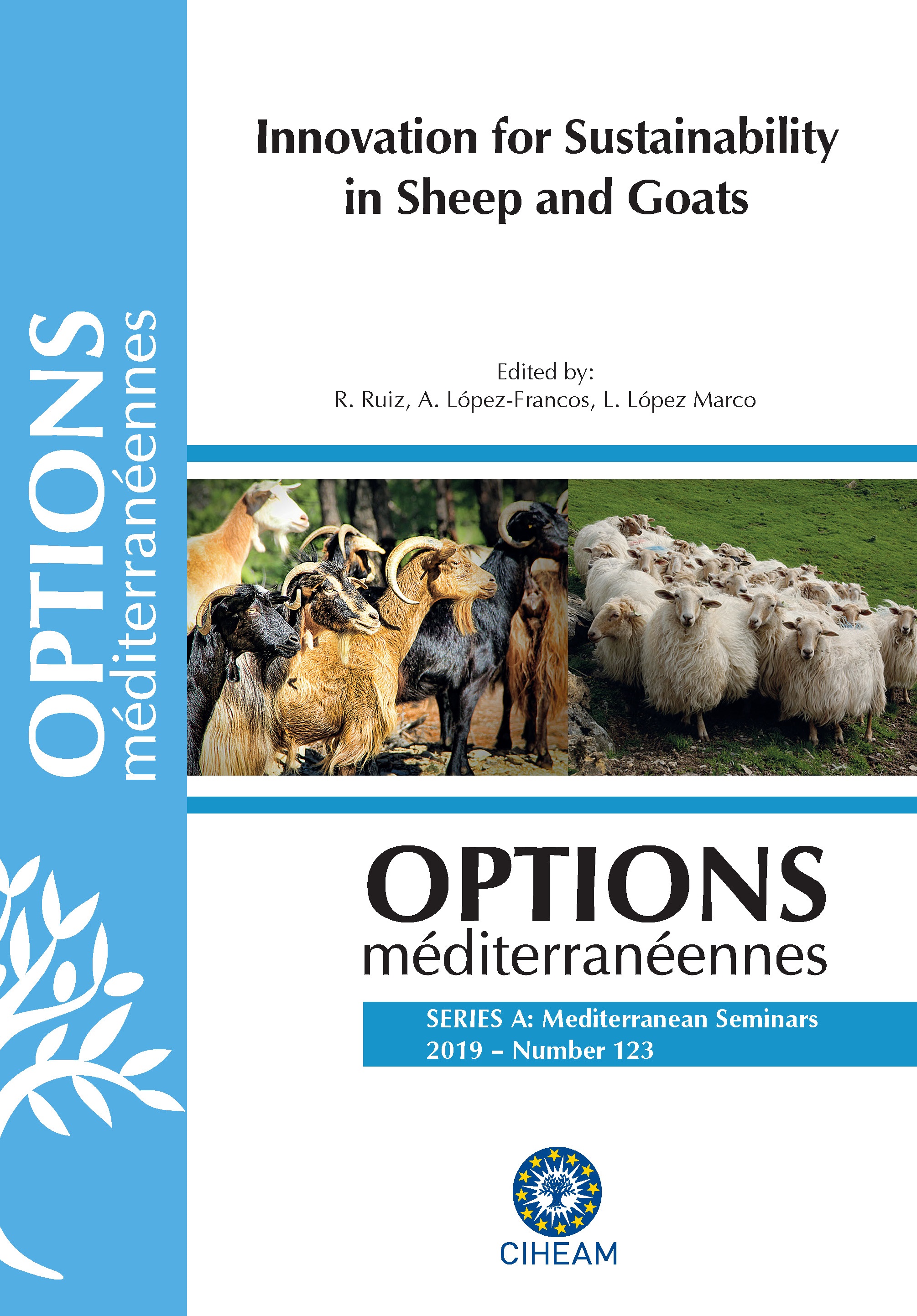| Article précédent | p. 345-349 | Article suivant |
Feeding strategy of Lacaune dairy sheep: dairy ewes fed in groups according to their milk yield
En France, les brebis laitières Lacaune du rayon de Roquefort sont alimentées en groupes avec grande variabilité de niveau de production de lait (MY). Un essai a été conduit en début de stade de lactation (50 j) pendant 100 jours avec trois lots de 54 brebis adultes sur la base de leur MY(l/j) : haut (H, 3,2), moyen (M, 2,7) ou bas (L, 2,2). Chaque lot était divisé en 2 groupes alimentés soit avec le même niveau de concentrés (CH, CM et CL) soit avec un apport ajusté à la MYdu groupe (EH, EM et EL). Toutes les brebis recevaient un mélange de fourrages distribué à volonté. Les quantités ingérées de fourrages n’ont pas été différentes (P>0,05) entre les groupes H et M (2,3 ± 0,17 kg MS), mais celles de CL(2,0 ± 0,17 kg MS) étaient inférieures (P<0,05) à EL(2,2 ± 0,17 kg DM). La variation de poids de EH (59,2 g/j) était supérieure (P<0,01) à celle de CH (33,9 g/j), et non significative (P>0,05) pour les autres groupes de même que pour l’état corporel. Aucun effet n’a été observé (P>0,05) sur la MY, la composition du lait ou les cellules somatiques. Seule la concentration en urée du lait de ELétait inférieure (P<0,001) à celle de CL. Aucun effet n’a été observé sur les paramètres biochimiques sanguins entre les lots E et C. Dans nos conditions, l’ajustement des apports de concentrés n’a ni économisé du concentré ni modifié la production de lait et sa qualité.
In France, Lacaune dairy sheep in the Roquefort area are fed in groups with a wide range of milk yields (MY). In order to adapt concentrate levels to MY, a100-dayexperimentwas conducted during the early milking period (50 days in milk) with three batches of 54multiparous ewes constituted according to their MY (L/d): high (H: 3.2), medium (M: 2.7) and low (L: 2.2). Each batch was separated into two groups of 27 ewes, a control group (C) and an experimental group (E), fed either with the same level of concentrate(CH, CM and CL) or with concentratesadjusted to theMY (EH, EM and EL), respectively.All ewes were fed a forage mixture ad libitum.The average daily individual forage dry matter intake was not different (P>0.05) between groups EH, CH, EM and CM(2.3 ± 0.17 kg DM),but that of CL(2.0 ± 0.17 kg DM) was lower (P<0.05) than EL (2.2 ± 0.17 kg DM).Body weight gain was higher (P<0.01) for EH (59.2 g/d) than for CH (33.9 g/d), but not for the other groups (P>0.05). Body condition score was not affected (P>0.05) by concentrate level in any of the groups.There was no effect (P>0.05) on MY and milk composition. However,the urea level in the milkwas lower (P<0.001) for ELthan CL.There was no effect on metabolism parameters between batches E and C. In our conditions, adjusting concentrates to the MY neither saved concentrate nor changed total milk yield.
- [ Afficher ]
- [ Télécharger ]
- [ Exporter la citation ]
Vous pouvez télécharger la citation au format :
- [ Imprimer ]
-
Mots-clés
ANIMAL LAITIER, BREBIS, INGESTION, LAIT, PRODUCTION LAITIERECiter cet article
Hassoun P., Hardy A., Tesnière A., Legarto J., De Boissieu C. Feeding strategy of Lacaune dairy sheep: dairy ewes fed in groups according to their milk yield. In : Ruiz R. (ed.), López-Francos A. (ed.), López Marco L. (ed.). Innovation for sustainability in sheep and goats. Zaragoza : CIHEAM, 2019. p. 345-349. (Options Méditerranéennes : Série A. Séminaires Méditerranéens; n. 123). 2. Joint Seminar of the Subnetworks on Nutrition and on Production Systems of the FAO-CIHEAM Network for Research and Development in Sheep and Goats, 2017/10/03-05, Vitoria-Gasteiz (Spain). http://om.ciheam.org/om/pdf/a123/00007910.pdf



